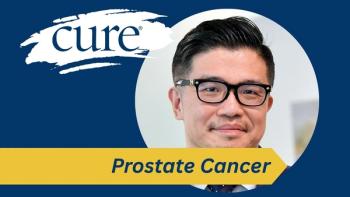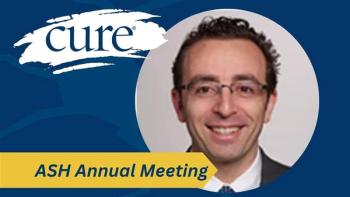
Trust is a Must During a Cancer Journey
A cancer diagnosis often means putting your life in the hands of people you hardly know.
There’s a saying that trust has to be earned. Most of the time, this is how I live my life both personally and professionally. I’m a native New Yorker. By design, I trust no one. But when it comes to healthcare, I have no choice but to break my own rule, not necessarily because I want to, but because I have to.
As I’ve been poked and prodded for several years now, I see how trust shows up in every step of my journey. It begins the minute I schedule my appointment. It shadows me when I walk through the door to the facility and check-in. Whether it’s bloodwork, a CT scan or mammogram, trust follows me around to each appointment. It’s trust that allows me to let technicians whom I’ll know for just a few minutes stick needles in my arms and fill my body with just enough contrast that I don’t start to glow.
I’ve got to trust that the people who are handling me know what they’re doing. I’ve got to trust that even though this is the job they perform every day, they see me as an individual who is scared. My most vulnerable self must trust they’ll treat me with empathy and kindness as my heart races, hoping that all news will be good news.
When you’re facing a cancer diagnosis, especially the first time around, you’re a novice. You can read and try to get educated, but you have no idea how your healthcare plan is going to play out. You don’t yet know the consequences you’ll face, side effects you’ll endure, and outcomes that will actually come to fruition. This naivete forces us to trust our healthcare teams.
Our treatment plans are often created by people we’ve only just met, and they’re based on data and experience from other patients that came before us. In many cases, we are literally trusting people we barely know with our lives.
An initial diagnosis of DCIS in my breast many years ago led my breast surgeon to recommend seven weeks of radiation, five days a week. To this day, I can’t tell you why that number of weeks and sessions was the “right” plan. I trusted that she knew best. And as my team expanded from my surgeon to an oncologist to technicians, I had to place trust in all the people who were going to execute her plan for me. I had to trust that the radiation technicians knew what they were doing so I wouldn’t get overdosed. I had to trust that the male techs viewing my exposed breast for several minutes a day weren’t inappropriate with me (after a few sessions I requested only female techs, and the office gave me a hard time), and I had to trust that the work we were doing was giving me a good chance that this early-stage cancer was never going to turn into anything more. And so far, knock wood, it hasn’t.
And for my more recent diagnosis of a rare high-grade neuroendocrine cancer in my colon, I once again had to trust the plan:four to six rounds of cisplatin and etoposide delivered over a three-day period, every three weeks. I trusted my surgeon, my oncologists, the technicians.
It was the most agonizing and painful four months of my life. I trusted that this aggressive poison would kill all remaining cancer cells and prevent metastasis. My trust was really tested six months later when despite our efforts, I wound up with a metastasis in my lung.
At the end of the day, I do trust that everyone in my healthcare circle knows more than I do and are doing the best they can. I recognize that they are the experts, but I’m part of the team, too. I have learned a lot over these past several years, including one of the most important lessons to learn as a patient.
Trust yourself. You know your body and mind better than anyone else.
For more news on cancer updates, research and education, don’t forget to subscribe to CURE®’s newsletters here.





